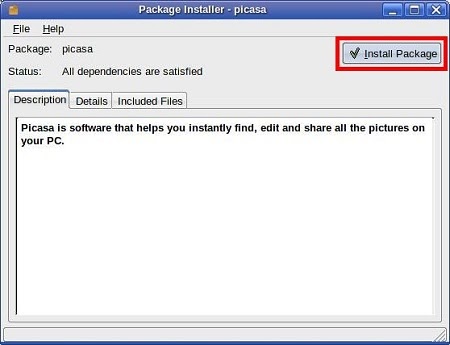In any operating system we need to install applications to complete our day to day tasks. In the world of Windows, every program has a simple Setup. On a Mac a package is a program. In both theoperating system you can simply click it and it will ask you . Installing Software on Linux ¶.

One of the most difficult things to get used to in the Linux world is installing new software packages. While Linux software can be almost that easy . A basic step-by-step guide with screen shots for new Linux desktop users. Linux manages software through packages , individual units of software that contain user interfaces, modules, and libraries. Most applications link several co- dependent packages together, and still others allow you to choose which packages to install and which to leave out at your own discretion. Contemporary distributions of Linux -based operating systems install software in pre-compiled packages , which are archives that contain binaries of software, configuration files, and information about dependencies.
Furthermore, package management tools keep track of updates and upgrades so that the . When you use apt to install a package , internally it uses dpkg.

When you install a package using apt, it first creates a list of all the dependencies and downloads it from the repository. Once the download is finished it calls dpkg to install all those files, satisfying all the dependencies. APT, the Advanced Packaging Tool, provides commands used for most common operations: Searching repositories, installing collections of packages and their dependencies, and managing . How to install updates via command line?
How do I install applications in Ubuntu. How can I install a package without root. You can also install multiple packages simultaneously by appending their names as arguments: yum install package_name package_name… If you are installing packages on a multilib . There are two main options of rpm command that are used to install or upgrade RPM packages : -i is used.
U is used to upgrade an RPM package but will also install a package if it does not exist in the RPM database. A package manager deals with packages , distributions of software and data in . In this article, we will explain how to list . It is common in the Python community to refer to a distribution using the term “ package ”. Using the term “distribution” is often not preferre because it can easily be confused with a Linux distribution, or another larger software distribution like Python itself. The Advanced Package Tool (APT) is how programs, libraries, documentation, and even the kernel itself are installed and managed on Kali and other Debian- based derivatives. Chances are your distribution came with plenty of software to cover the basics.
Yet no matter how thorough of a job it di you want to install more.

Most of the time, you will fire up a package. There are a growing number of different ways to install Yarn: macOS Windows Linux Alternatives. Select your platform above.
You can install Yarn through the Homebrew package manager. This will also install Node.